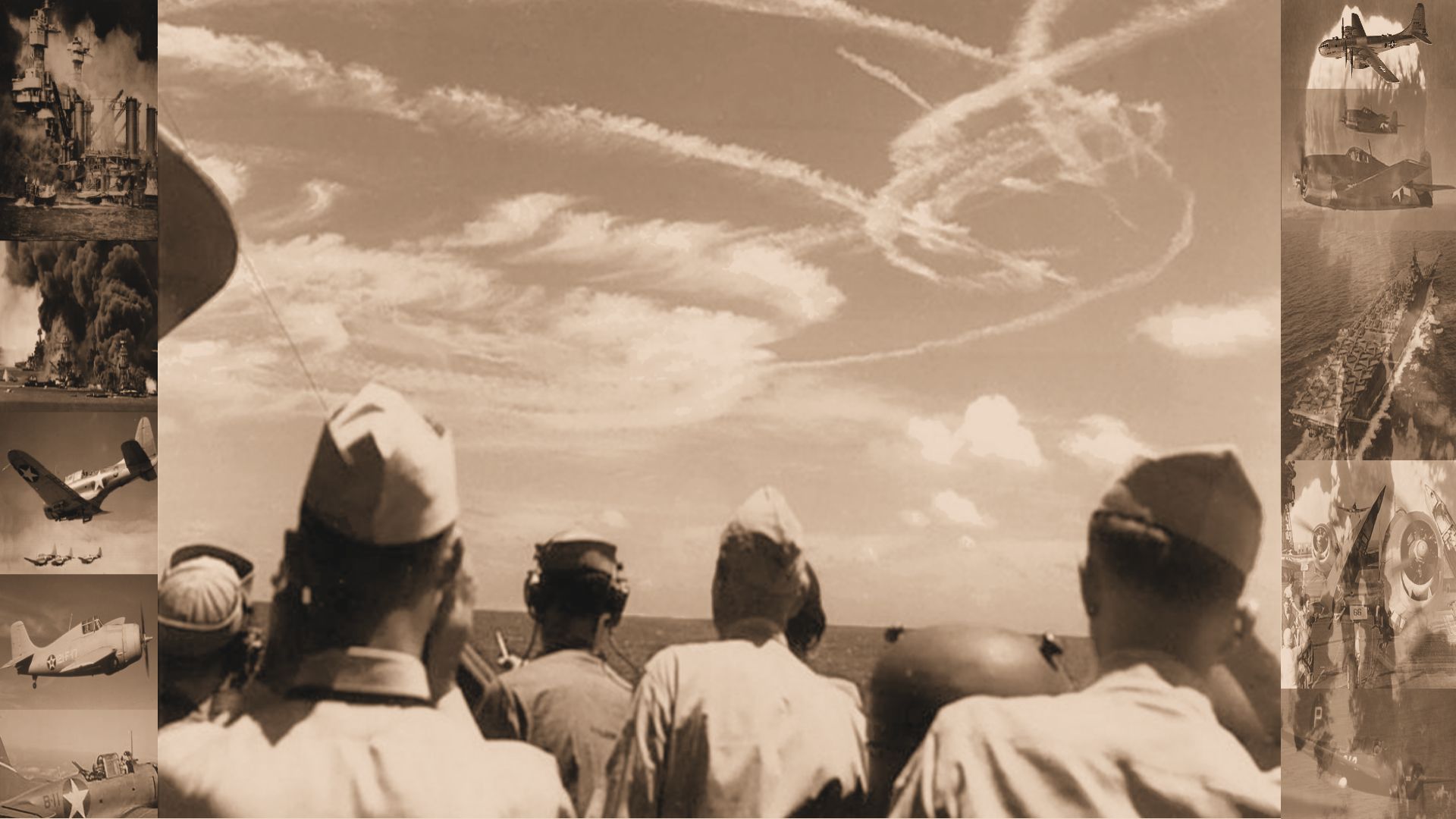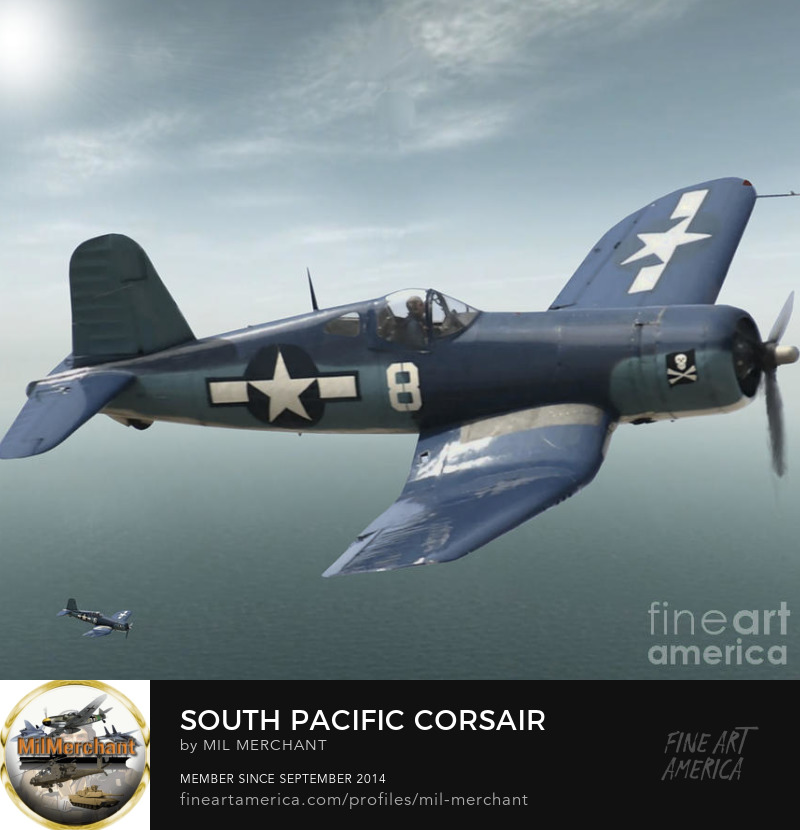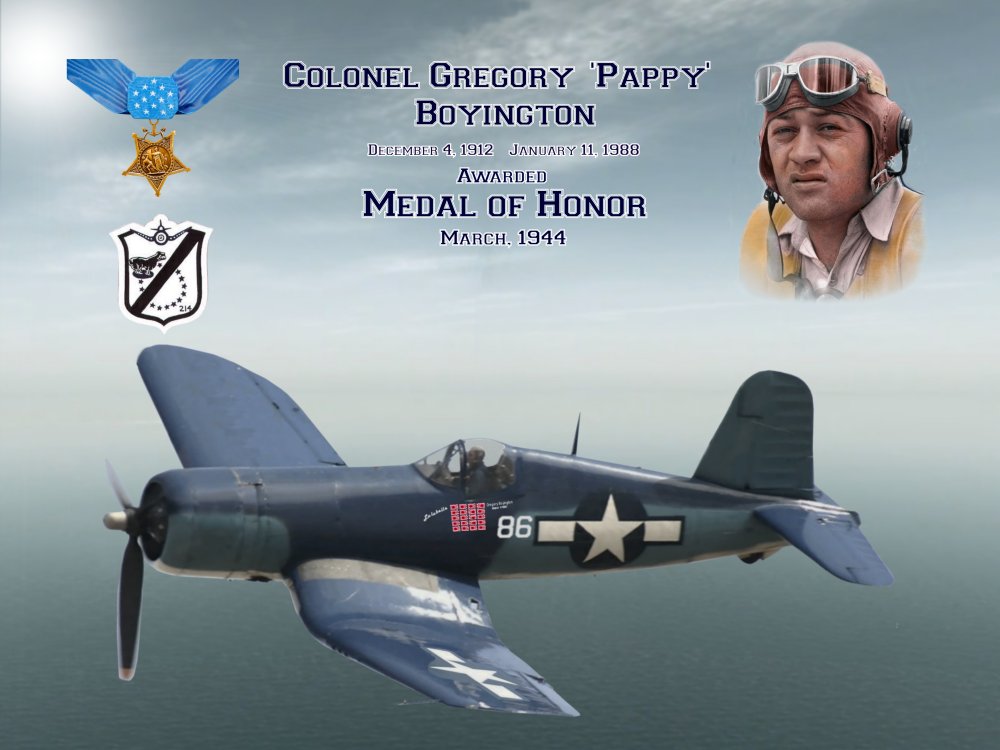 Vought F4U 'Corsair'
Vought F4U 'Corsair'
The Vought F4U 'Corsair' series of aircraft was one of the finer fighter developments of the Second World War, primarily seeing combat in the Pacific Theater of War. The uniquely designed bent-wings and ever-improving powerplant assured the system success over any enemy it encountered. The F4U would become the first Allied aircraft to even be able to contend with the Japanese Mitsubishi A6M 'Zero' on better than even terms. The Corsair served in the U.S. Navy, U.S. Marines, Fleet Air Arm and the Royal New Zealand Air Force, as well as the French Navy Aéronavale and other, smaller, Air Forces until the 1960s. As well as being an outstanding fighter, the Corsair proved to be an excellent fighter-bomber, serving almost exclusively in the latter role throughout the Korean War and during the French colonial wars in Indochina and Algeria.
Back to Top
Development
In June 1938, the U.S. Navy signed a contract with Vought for a prototype, the XF4U-1, BuNo 1443. The Corsair design team was headed up by Rex Beisel. After mock-up inspection in February 1939, construction of the XF4U-1 powered by an XR-2800-4 prototype of the Pratt & Whitney Double Wasp twin-row, 18-cylinder radial engine, rated at 1,805 hp (1,346 kW) went ahead quickly, as the very first airframe ever to have a Double Wasp engine fitted for flight. When the prototype was completed it had the biggest and most powerful engine, largest propeller and probably the largest wing on any naval fighter to date. The first flight of the XF4U-1 was made on 29th of May 1940. On 1 October, the XF4U-1 became the first single-engine U.S. fighter to fly faster than 400 mph (640 km/h) by setting an average ground speed of 405 miles per hour (652 km/h). Formal U.S. Navy acceptance trials for the XF4U-1 began in February 1941. The Navy entered into a letter of intent on 3 March 1941, received Vought's production proposal on 2 April and awarded Vought a contract for 584 F4U-1 fighters, which were given the name 'Corsair'.
Back to Top
In Action
Carrier qualification trials on the escort carrier USS Sangamon, on 25 September 1942, caused the U.S. Navy to release the type to the United States Marine Corps(USMC). The U.S. Navy had the Grumman F6F 'Hellcat', which did not have the performance of the F4U but was a far better deck landing aircraft and the Marines needed a better fighter than the F4F 'Wildcat'. For them, it was not as important that the F4U could be recovered aboard a carrier, as they usually flew from land bases. Twelve USMC F4U-1s arrived at Henderson Field (Guadalcanal) on 12 February 1943. The U.S. Navy did not get into combat with the type until September 1943. From February 1943 onward, the F4U operated from Guadalcanal and ultimately other bases in the Solomon Islands. The first recorded combat engagement was on 14 February 1943, when Corsairs of VMF-124 assisted P-40 'Warhawks' and P-38 'Lightnings' in escorting a formation of Consolidated B-24 'Liberators' on a raid against a Japanese aerodrome at Kahili. Japanese fighters contested the raid and the Americans got the worst of it, with four P-38s, two P-40s, two F4Us and two B24s lost. No more than four Japanese A6M 'Zeros' were destroyed. A Corsair was responsible for one of the kills, although this was due to a midair collision. The fiasco was referred to as the 'Saint Valentine's Day Massacre'.
Back to Top
By May, the Corsair units were getting the upper hand, and VMF-124 had produced the first Corsair ace. VMF-113 was activated on 1 January 1943 at Marine Corps Air Station El Toro as part of Marine Base Defense Air Group 41. They were soon given their full complement of 24 F4U Corsairs. On 26 March 1944, while escorting four B-25 'Mitchell' bombers on a raid over Ponape, they recorded their first enemy kills, downing eight Japanese aircraft. Corsairs also served well as fighter-bombers in the Central Pacific and the Philippines. By spring 1944, Marine pilots were beginning to exploit the type's considerable capabilities in the close-support role during amphibious landings. By the beginning of 1945, the Corsair performed strikes with high-explosive bombs, napalm tanks, and HVARs. She proved surprisingly versatile, able to operate everything from Bat glide bombs (without sacrificing a load of 2.75 in/70 mm rockets) to 11.75inch (300 mm) Tiny Tim rockets. The aircraft was a prominent participant in the fighting for the Palaus, Iwo Jima and Okinawa. VMF-312, VMF-323, VMF-224, and a handful of others met with success in the Battle of Okinawa. At war's end, Corsairs were ashore on Okinawa, combating the kamikaze, and also were flying from fleet and escort carriers.
Back to Top
Korea
During the Korean War, the Corsair was used mostly in the close-support role. The AU-1 Corsair was developed from the F4U-5 and was a ground-attack version which normally operated at low altitudes. The versions of the Corsair used in Korea from 1950 to 1953 were the AU-1, F4U-4B, -4C, -4P and -5N and 5-NL, with the F4U-5N and -5NL F4U 'Corsair' night fighters being used to attack enemy supply lines, including truck convoys and trains, as well as interdicting night attack aircraft. Lt Guy Bordelon, the US Navy's sole ace of the Korean War, flew an F4U-5N night-fighter against the night raiders sent up by the North Korean Air Army.
Back to Top
Foreign Service
Great Britain
In November 1943, the Royal Navy received the first batch of 95 Vought F4U-1s, which were given the designation of 'Corsair I' put the Corsair into carrier operations immediately. They found its landing characteristics dangerous, suffering a number of fatal crashes, but considered it as the best option they had. In Royal Navy service, because of the limited hangar deck height in several classes of British carrier, many Corsairs had their outer wings "clipped" by 8 in (200 mm) to clear the deckhead. Other modifications to the Corsair that made carrier landings more practical. Among these are the bulged 'Malcolm Hood', raising the pilot's seat 7 in (180 mm) and wiring shut the cowl flaps across the top of the engine compartment, diverting the oil and hydraulic fluid around the sides of the fuselage. The Royal Navy cleared the F4U for carrier operations well before the U.S. Navy and showed that the Corsair Mk II could be operated with reasonable success even from escort carriers. A total of 2,012 Corsairs were supplied to the United Kingdom.
Back to Top
New Zealand
Some 424 Corsairs equipped 13 RNZAF squadrons, including No. 14 Squadron RNZAF and No. 15 Squadron RNZAF, replacing SBD Dauntless as well as P-40s. In total there were 237 F4U-1s and 127 F4U-1Ds used by the RNZAF during the Second World War. The first deliveries of lend-lease Corsairs began in March 1944 with the arrival of 30 F4U-1s at the RNZAF Base Depot Workshops (Unit 60) at Espiritu Santo in the New Hebrides. By late 1944, the F4U had equipped all 10 Pacific-based fighter squadrons of the RNZAF. By the time the Corsairs arrived, there were virtually no Japanese aircraft left in New Zealand's allocated sectors of the Southern Pacific, and despite the RNZAF Squadrons extending their operations to more northern islands, they were primarily used for close support of American, Australian and New Zealand soldiers fighting the Japanese. At the end of 1945, all Corsair squadrons but one (No. 14) were disbanded.
Back to Top
France
After the war, the French Navy had an urgent requirement for a powerful carrier-born close-air support aircraft to operate from the French Navy's four aircraft carriers that it acquired in the late 1940s (Two former U.S. Navy and two Royal Navy carriers were transferred). Secondhand US Navy Douglas SBD 'Dauntless' dive-bombers of Flotille 3F and 4F were used to attack enemy targets and support ground forces in the north of Indo-China. Former US Grumman F6F-5 Hellcats and Curtiss SB2C 'Helldivers' replaced the Dauntless in attacking roads, bridges and providing close air support. The last production Corsair was the 'F4U-7', which was built specifically for the French naval air arm, the Aeronavale.
Back to Top
Statistics
Infantrymen nicknamed the Corsair 'The Sweetheart of the Marianas' and 'The Angel of Okinawa' for its roles in these campaigns. Among Navy and Marine aviators, however, the aircraft was nicknamed 'Ensign Eliminator' and 'Bent-Wing Eliminator' because it required many more hours of flight training to master than other Navy carrier-borne aircraft. It was also called simply 'U-bird' or 'Bent Wing Bird'. Although Allied World War II sources frequently make the claim that the Japanese called the Corsair the 'Whistling Death', there is no real evidence that they did and may have been propaganda.
U.S. figures compiled at the end of the war indicate that the F4U and FG flew 64,051 operational sorties for the U.S. Marines and U.S. Navy through the conflict (44% of total fighter sorties), with only 9,581 sorties (15%) flown from carrier decks. F4U and FG pilots claimed 2,140 air combat victories against 189 losses to enemy aircraft, for an overall kill ratio of over 11:1. The F4U 'Corsair' bore the brunt of U.S. Marine fighter-bomber missions, delivering 15,621 tons (14,171 tonnes) of bombs during the war (70% of total bombs dropped by U.S. fighters during the war). From the first prototype delivery to the U.S. Navy in 1940, to final delivery in 1953 to the French, 12,571 F4U Corsairs were manufactured by Vought, in 16 separate models, in the longest production run of any piston-engined fighter in U.S. history (1942-53).
Back to Top




